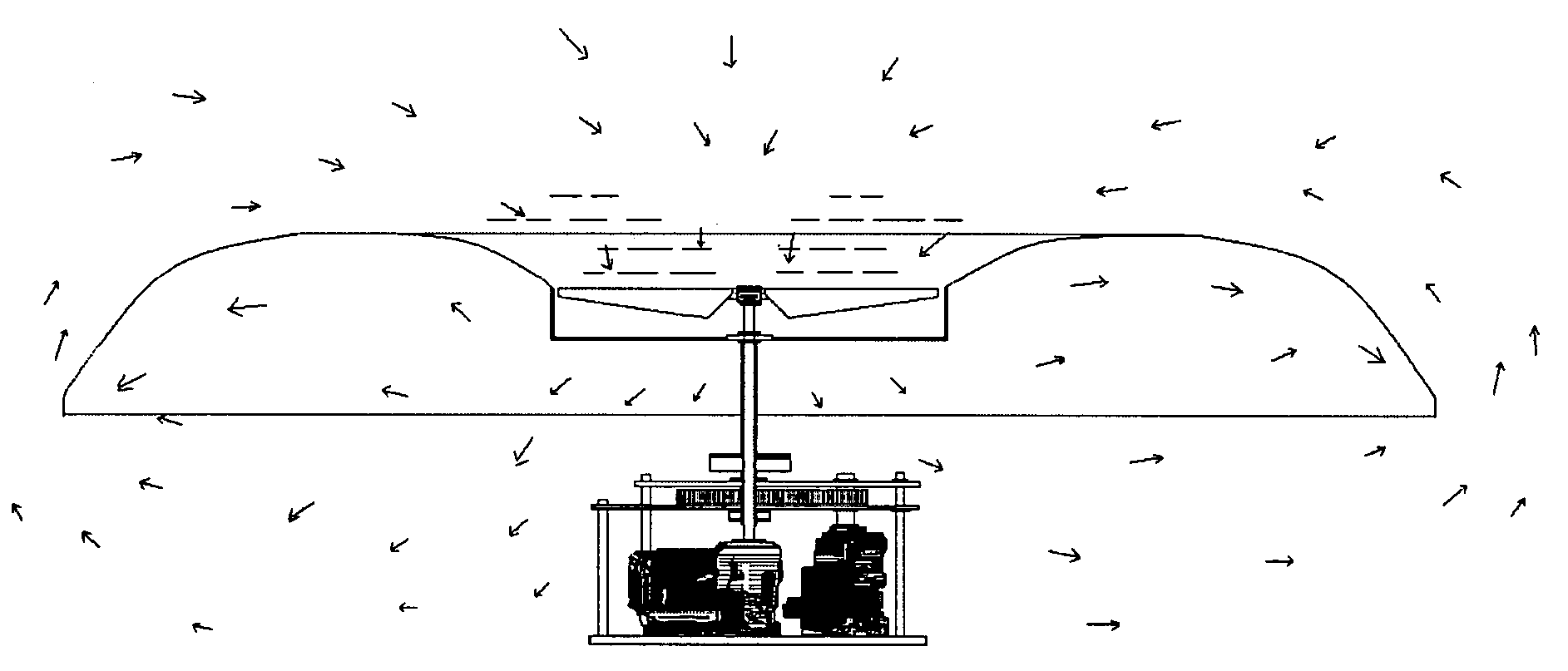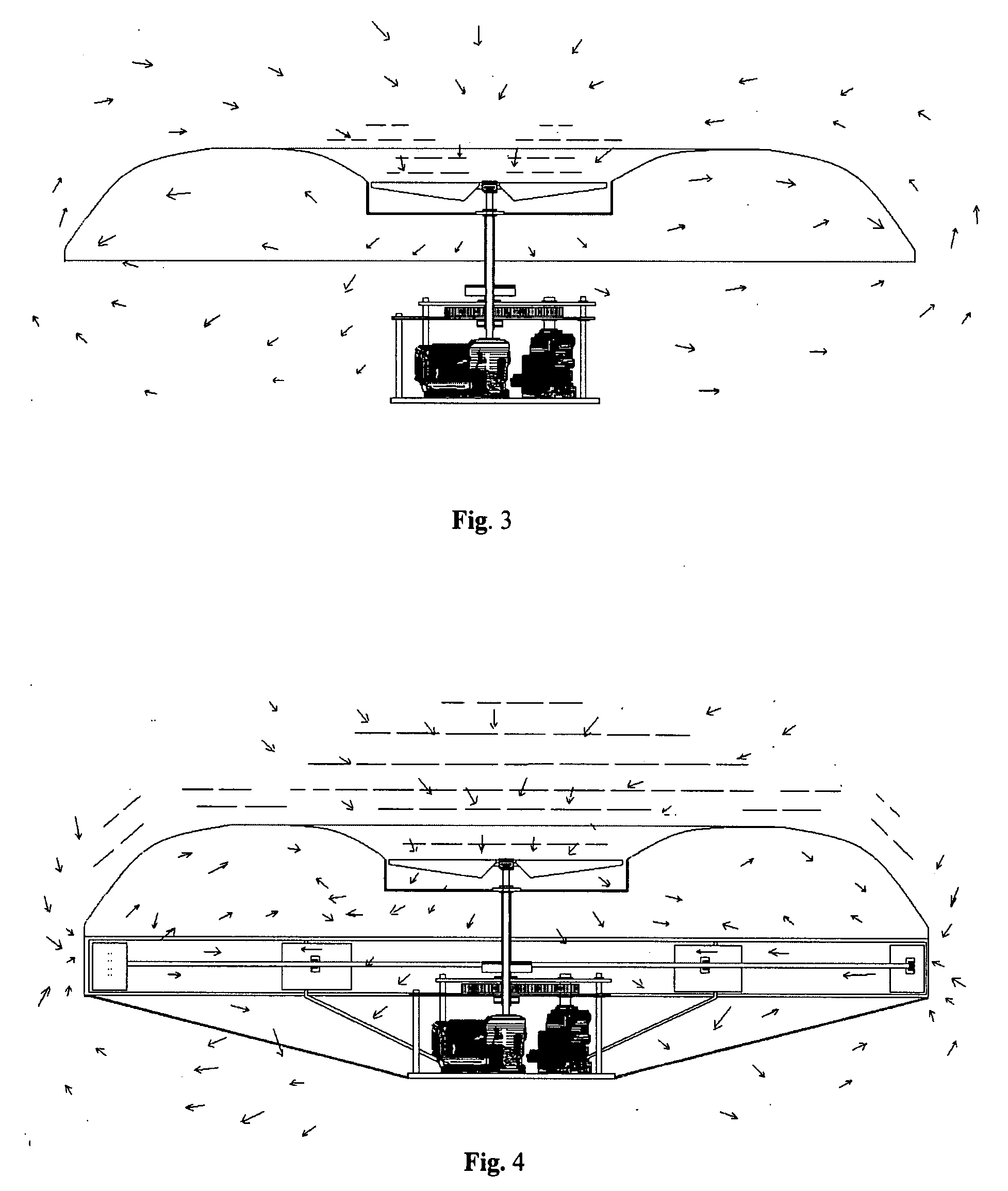Aerial Lifting and Propulsion Device (ALPD)
a propulsion device and air technology, applied in aircrafts, vehicles, air-flow influencers, etc., can solve the problems of not being able to teach or incorporate the features of air vehicles in the existing methodologies
- Summary
- Abstract
- Description
- Claims
- Application Information
AI Technical Summary
Benefits of technology
Problems solved by technology
Method used
Image
Examples
Embodiment Construction
[0025]On Mar. 8, 2006, through the Law Offices of Fleishner and Kim, L.L.P., Registration Number 38128, I filed a Provisional Patent on the invention for which I am now seeking a Non Provisional Utility Patent in this application for a patent. The details of the Provisional Patent are as follows: Provisional Application; Docket Number GLM-0001PR; Inventor / Applicant: Mack, Gerald L; Residence: Centreville, Va.; Date Filed: Mar. 8, 2006; and Title of Invention: Aerial Lifting and Propulsion Device (ALPD).
[0026]The first claim of this invention is that the atmospheric conditions that create lift in a winged or rotary aircraft can be created around a stationary object, body or wing, hereafter referred to as a wing, by changing the configuration of the wing to be lifted, and any attachments, so that the wing has an inner and outer circumference. This means the wing configuration must be changed from the traditional rectangular, triangular or other configuration to a wing configuration th...
PUM
 Login to View More
Login to View More Abstract
Description
Claims
Application Information
 Login to View More
Login to View More - R&D
- Intellectual Property
- Life Sciences
- Materials
- Tech Scout
- Unparalleled Data Quality
- Higher Quality Content
- 60% Fewer Hallucinations
Browse by: Latest US Patents, China's latest patents, Technical Efficacy Thesaurus, Application Domain, Technology Topic, Popular Technical Reports.
© 2025 PatSnap. All rights reserved.Legal|Privacy policy|Modern Slavery Act Transparency Statement|Sitemap|About US| Contact US: help@patsnap.com



